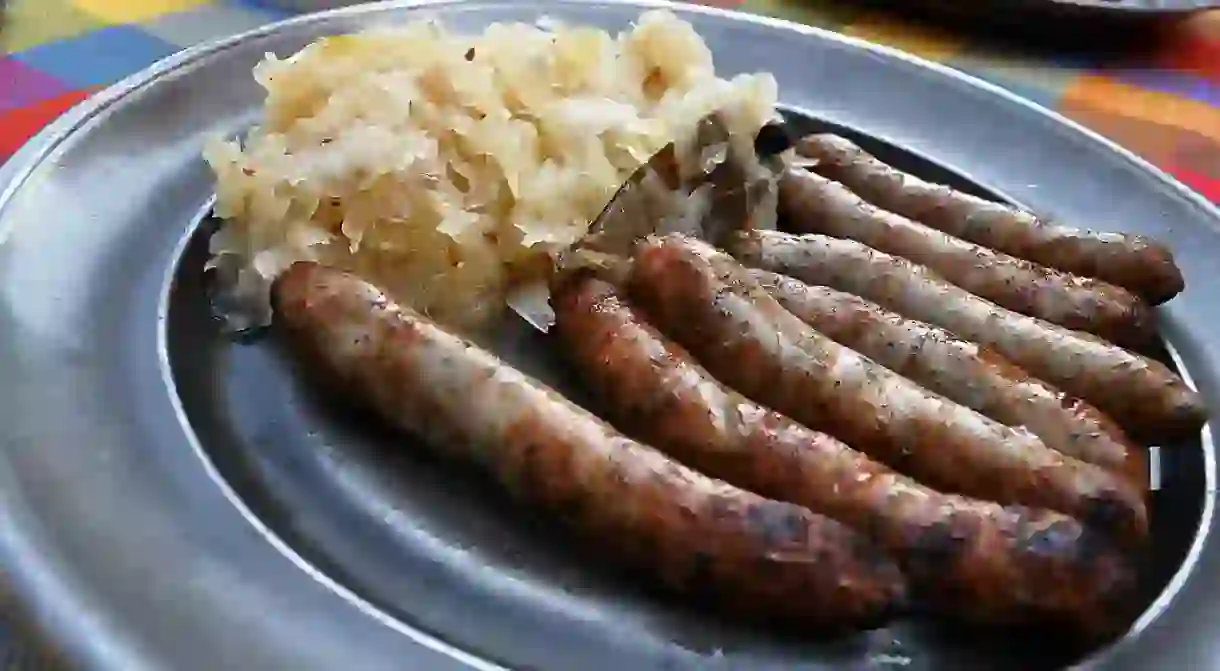7 Traditional Dishes You Need to Try When You're in Nuremberg

Nuremberg is the perfect place to try some of the regional specialities that Bavaria and Franconia are known for. On the must-try list are substantial and hearty meals revolving around meat and carbs, as well as sugary treats. Read on for our list of foods you have to try when you’re in town.
Fränkisches Schäufele
Schäuferla is a favourite Franconian dish you’ll find on many restaurant menus across the region and describes the local take on a roast shoulder of pork. Still on the bone, the meat is covered with a thick layer of fat, placed in a deep pan and topped with a blend of meat stock and dark beer to be roasted in the oven for several hours. Once done, the meat should almost fall off the bone when it’s served with potato dumplings and cabbage.

Ochsenmaulsalat
This meaty salad dish has been around since the 19th century, but has forfeited much of its popularity. Some of Nuremberg’s traditional restaurants have not given up on the dish just yet and continue to marinate the finely sliced and boiled ox mouth meat in a vinaigrette, wine and onions, before preparing plates of the salad alongside rye bread and butter or fried potatoes.
Nürnberger Rostbratwürste
This Nuremberg sausage speciality is not only popular in around Franconia, but has also found its way to BBQs and food stalls all across Germany. The successful recipe is protected under EU law and banks on finely ground pork meat, seasoned with salt and marjoram. While Germans generally get creative when it comes to side dishes and condiments, the nine-inch (23-cm) sausages are traditionally served as ‘Drei im Weggla’ – which means not more than three in a bun – or on a tin platter of six to twelve sausages accompanied by cooked cabbage.

Fränkischer Karpfen
The fact that a fish dish still ranks among the most popular traditional meals testifies to the influence Christianity has had on the city and the region, going back to a time when most people would only eat fish on certain days of the year. From September through to April, carp finds its way onto most restaurant menus, often coated in flour, oil and beer batter, then fried until done. For the ‘blue’ version, the carp is cooked in water and vinegar, but some eateries also serve a straightforward carp filet. Popular side dishes are potatoes, cabbage or a simple salad.
Nürnberger Lebkuchen
The Christmas season brings a ton of delightful culinary treats to Germany’s shops, and homes and many cities celebrate regional specialities. Nuremberg is known for its Lebkuchen (gingerbread) recipe of wheat flour, ginger, cinnamon, cloves and nuts which has been traced to the 13th century. Lebkuchen cookies come in a multitude of shapes and sizes – some of them are coated with chocolate or sprinkled with nuts, and they’re simply delicious. They’re so good that you can buy them year-round at shops, but nothing beats a fresh batch bought at the December Christmas markets. Just follow the sweet and spicy scent coming from the wooden huts.

Fränkischer Spargelsalat
If you’ve been to Germany in spring, you’ve probably noticed that the entire country is nuts about asparagus. The asparagus season is celebrated with festivals, events and a whole bunch of recipes that dominate food menus from April to the end of June. The Franconian recipe for asparagus salad involves white asparagus which is peeled and boiled for about 15 minutes. Once it’s cool, the asparagus is soaked in the leftover stock, vinegar, salt, pepper, chives and parsley for a couple of hours. The salad is a popular side for jacket potatoes or schnitzel.
Knieküchla
If you have a sweet tooth, there’s more to try than the local take on gingerbread. Knieküchla is a traditional pastry from the region based on a yeast dough, usually with added raisins. Formed into a circular shape with a thin middle part and thicker edges, the dough is deep fried in clarified butter until they take on a gold and brown colour and then dusted with powdered sugar.














